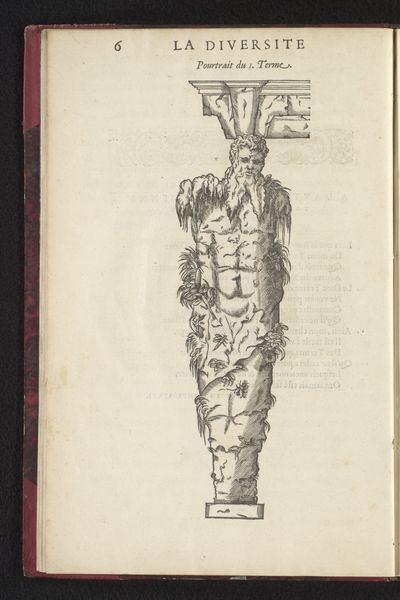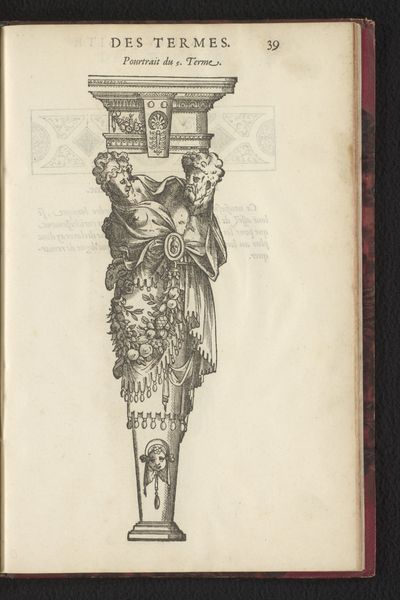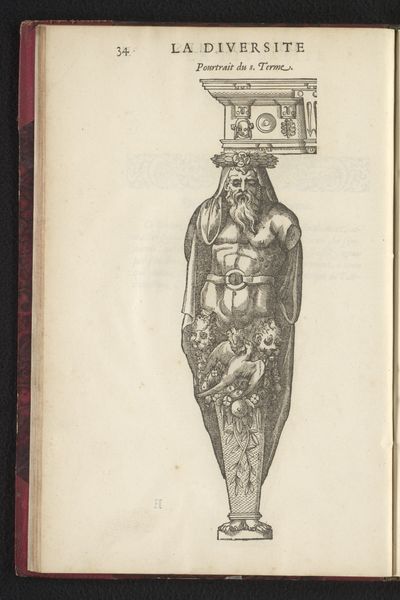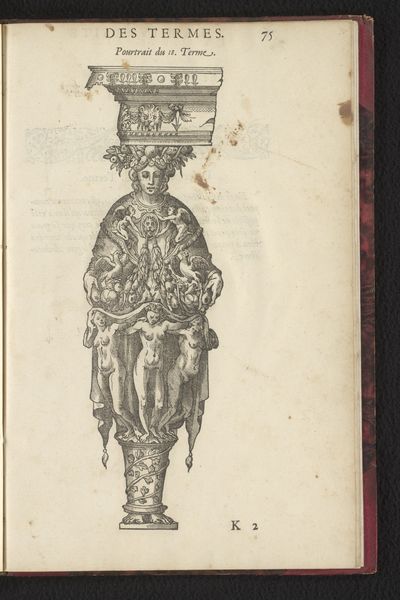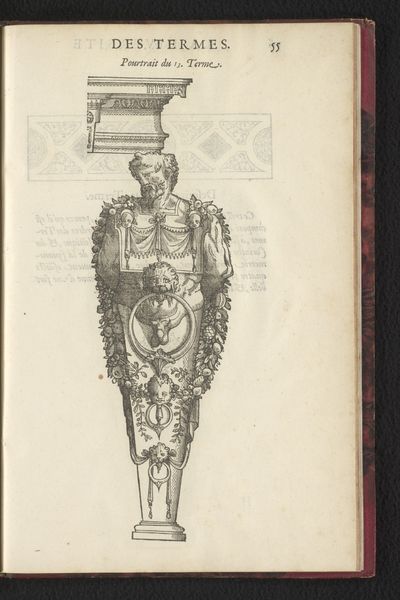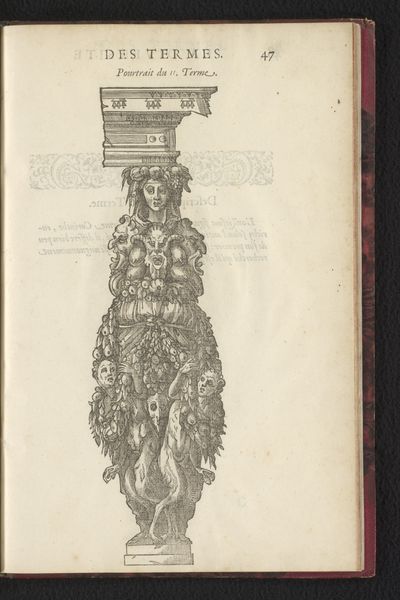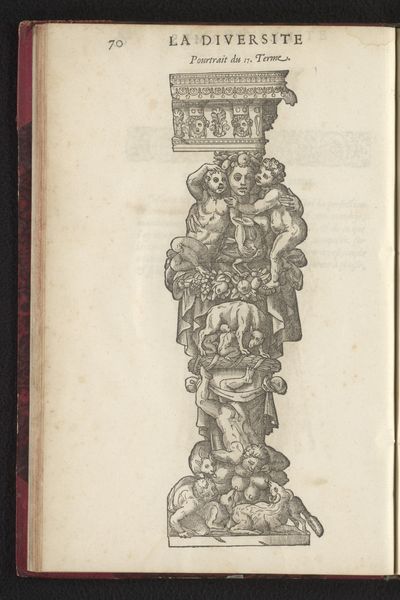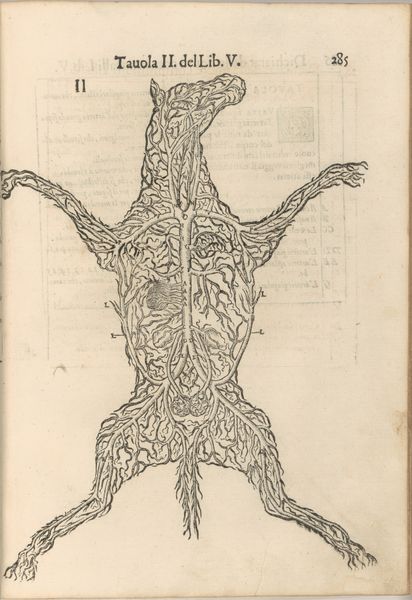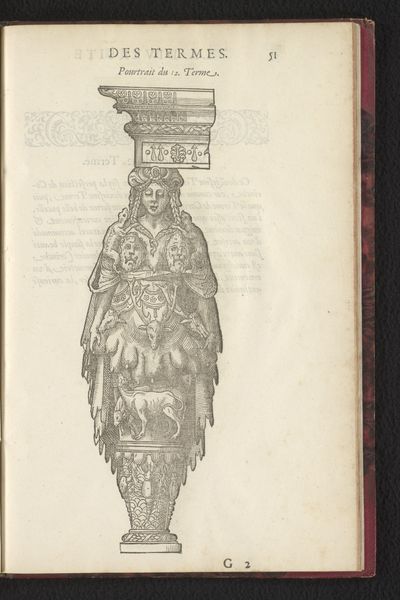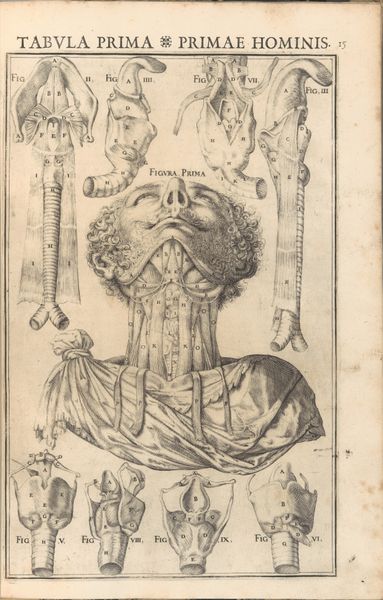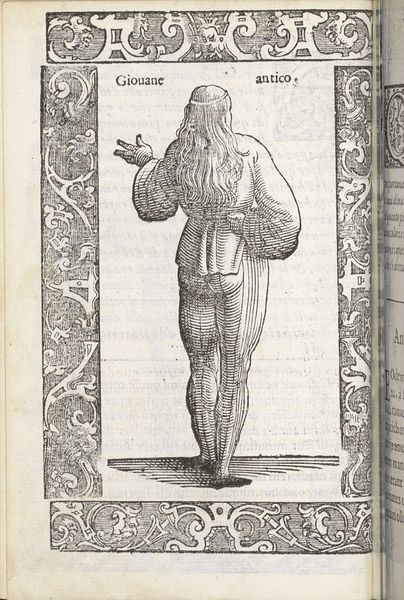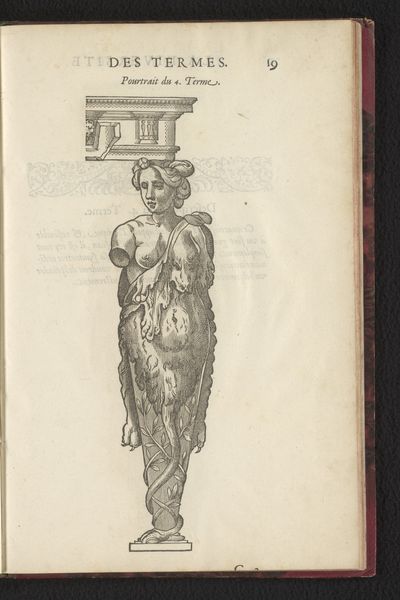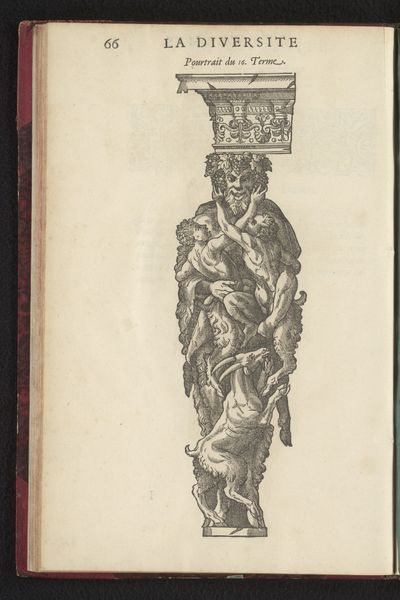
drawing, print, intaglio, engraving
#
drawing
# print
#
intaglio
#
figuration
#
11_renaissance
#
nude
#
engraving
Dimensions: height 308 mm, width 201 mm
Copyright: Rijks Museum: Open Domain
Curator: This image presents a rather curious piece, entitled "Vrouwelijke term van begroeide steen," an engraving dating back to 1572. Editor: My immediate reaction is a sense of decay and reclamation. The form, clearly meant to represent the female figure, is being overtaken by, or perhaps emerging from, what appears to be rough stone and foliage. There's a fragility juxtaposed with the permanence of stone that intrigues me. Curator: Indeed. It’s important to remember the socio-political context. Representations of the female nude during the Renaissance were often intertwined with allegories of virtue, beauty, and even political power. However, here, this female form is literally crumbling, merging with nature, prompting us to question those established notions of idealised beauty and societal control. The plant life disrupting the sculpted stone could symbolize nature's enduring power against patriarchal systems that seek to confine female bodies. Editor: I wonder about the reception of this piece in its time. Given the pervasive patriarchal structures you mentioned, was this viewed as subversive or simply as a curious anatomical study, perhaps lacking in proper finish? Was it even considered "art" or merely a craftsman's reference image? The inclusion of other faces within the rock element really obscures it to me even more, giving this bizarre quality. Curator: That's precisely what makes it so compelling! Considering the historical backdrop of increasing urbanization and the separation of humans from nature, the image seems to propose an uneasy relationship between civilization and the natural world. It suggests a deconstruction of artifice, urging a reconnection with elemental forces and a challenge to gendered social order, at least, in my understanding. I also find the element of metamorphosis within the depiction relevant to shifting views on religion at the time. Editor: Yes, it is not every day we are confronted by that specific composition that can mean all of this within one single picture. The term is a great topic to focus an entire lecture on. The artist also certainly achieved their original intent! Curator: Indeed. An encounter with art, after all, prompts us to consider these very debates. Editor: Precisely. Art such as this remains deeply relevant, echoing long after its creation.
Comments
No comments
Be the first to comment and join the conversation on the ultimate creative platform.
